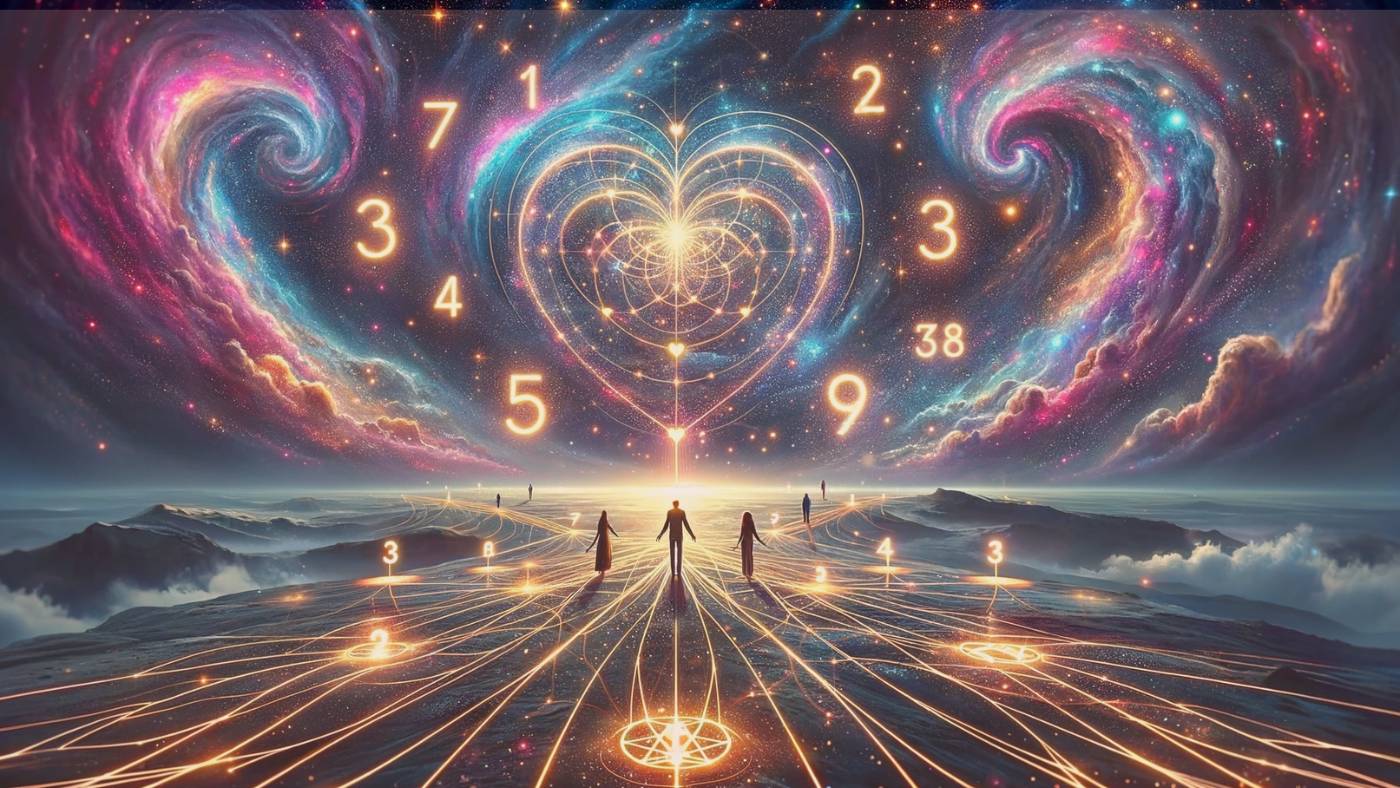Learning how to read tarot cards can be overwhelming and confusing for many. With so many cards, symbols, and interpretations, it’s hard to know where to start and how to make sense of the images.
The wrong interpretation of tarot cards can lead to incorrect readings that may leave readers feeling lost and uncertain. Understanding the symbolism and meaning behind every card is essential to providing reliable readings.
Discover the power of tarot cards with How to Use Tarot Cards! Our simple guide breaks down the basics of tarot reading, allowing you to learn how to read each card in a way that is simple and easy to understand. With our step-by-step guide, you can confidently interpret the cards and provide reliable readings to help you build a successful practice.
History of Tarot Cards
The history of tarot cards dates back to the 15th century, with the earliest known tarot deck being created in Italy during this time. The tarot cards were initially used for playing games, but over time they began to be used for divination and self-discovery. To know deeper about its origin and evolution, read on!
Origins of Tarot Cards
The origin of tarot cards is a topic of much debate among scholars, with many theories and hypotheses. Some believe that tarot cards originated in ancient Egypt, while others suggest a connection to the Kabbalah or the Gypsies. One theory is that tarot cards were first used as playing cards in the 14th century in Italy and became associated with divination and spirituality over time.
Evolution of Tarot Cards
Tarot cards have undergone many changes throughout history. In the 15th and 16th centuries, tarot decks began to feature more complex designs and symbolism, becoming more closely associated with the occult and mysticism. In the 18th and 19th centuries, the tarot became popular among the upper classes, and many different variations of the deck were created. Today, countless different tarot decks are available, each with unique artwork and symbolism.
The Popularity of Tarot Cards in Modern Times
Tarot cards have recently been popular, with many people turning to them for guidance and insight. This is partly due to the rise of the New Age movement and the popularity of spirituality and alternative forms of healing. Many believe tarot cards can help them gain a deeper understanding of themselves and their lives and offer guidance for making important decisions. Additionally, tarot card reading has been widely used in many occult practices and fortune-telling. Many people seek tarot reading to gain insight into their future, understand the nature of their problems, or receive guidance in making important decisions.
Understanding How To Use Tarot Cards
The Tarot Deck is a powerful tool for self-discovery and understanding the complexities of human nature. Each card in the deck has its unique symbolism and meaning, and the combination of these cards in a reading can provide valuable insights into our lives, relationships, and journey through the world.
It’s important to remember that interpreting the cards is a personal and subjective process, and seeking guidance from a professional tarot reader is always recommended. Here are the different types of Tarot Deck:
Major Arcana
Explanation of the 22 cards: The Major Arcana is a set of 22 cards in a tarot deck representing the major spiritual and psychological forces in our lives. These cards are often seen as the foundation of the tarot and are used to explore more profound aspects of the self, such as inner truths, personal growth, and the soul’s journey. Some examples of cards in the Major Arcana include The Fool, The Magician, The High Priestess, The Empress, and The World.
Significance of each card: Each card in the Major Arcana has a specific meaning and significance that can be interpreted differently based on the context of a reading. For example, The Fool can represent a new beginning, an opportunity for growth, or a sense of freedom. At the same time, The Magician can symbolize creativity, power, and the ability to manifest one’s desires. The High Priestess can represent intuition, secrets, and hidden knowledge, while The Empress can symbolize fertility, abundance, and nurturing. The World can represent completion, the end of a journey and a sense of fulfilment.
Minor Arcana
Explanation of the 56 cards: The Minor Arcana is a set of 56 cards in a tarot deck representing the more concrete aspects of our lives, such as our daily experiences, relationships, and material possessions. These cards are divided into four suits: Cups, Swords, Wands, and Pentacles. Each suit represents a different aspect of life: Cups represent emotions and relationships, Swords represent thoughts and communication, Wands represent action and creativity, and Pentacles represent material matters and the physical world.
Significance of each card: Each card in the Minor Arcana has a specific meaning and significance based on its suit and number. For example, the Ace of Cups can represent new beginnings in relationships and emotional fulfilment, while the Three of Swords can symbolize heartbreak and betrayal. The Seven of Wands represent competition and the need to defend oneself, while the Ten of Pentacles symbolize material abundance and stability.
Court cards
Explanation of the 16 cards: The Court cards are a set of 16 in a tarot deck representing people in our lives or aspects of our personality. These cards are divided into four groups: the King, Queen, Knight, and Page. Each group represents a different aspect of life: Kings represent authority, Queens represent nurturing and compassion, Knights represent action and change, and Pages represent learning and communication.
Significance of each card: Each card in the Court cards has a specific meaning and significance based on its group and suit. For example, the King of Cups can represent a kind and emotionally stable authority figure, while the Queen of Swords can symbolize a strong and intelligent woman. The Knight of Wands can represent a young and ambitious person, while the Page of Pentacles can symbolize a student or someone hardworking and practical.
How to Read Tarot Cards
Reading tarot cards involves understanding the meaning of each card and how it relates to the specific question or situation being asked. It also requires being open to the messages the cards may offer and having a clear intention for the reading. Read more for a step-by-step walkthrough of your divine reading.
1. Choosing a Deck
One of the most important things to consider when reading tarot cards is the deck you will be using. There are countless decks, each with unique artwork, symbolism, and energy. Some decks may be more traditional, while others may be more modern or even feature different cultural influences. Choosing a deck that resonates with you and your beliefs is essential. Take the time to look through different decks and find one that speaks to you.
2. Cleansing and Charging Your Deck
Once you have chosen your deck, it is essential to cleanse and charge it. This helps clear any negative energy or vibrations the cards may have picked up during production or shipping. One way to cleanse and charge your deck is by holding it in your hands and visualizing white light flowing through it. You can also place your deck in a bowl of salt or bury it in the earth for a day.
3. Shuffling and Cutting the Deck
Before you begin reading your tarot cards, it is essential to shuffle and cut the deck. This helps to mix up the cards and allows you to focus on the present moment. Hold the deck in your hands to shuffle the cards and mix them up with a regular deck of playing cards. To cut the deck, split it into three piles and reassemble them. You can also use a specific shuffling method such as the “Riffle shuffle” or “Overhand shuffle”.
4. Choosing a Spread
A spread is the layout of cards you will use to read your tarot cards. Many different spreads are available, each with its specific meaning and purpose. Some popular spreads include the three-card spread, used for general guidance and insight, and the Celtic cross spread, used for more in-depth readings.
Choosing a spread that aligns with your intentions for the reading is essential. You should jump right in below for the different types of tarot spread.
5. Interpreting the Cards
Once you have chosen a spread and laid out your cards, it is time to interpret them. The interpretation of tarot cards is both an art and a science. It is essential to rely on your intuition and knowledge of the cards’ meanings. Each card has a specific meaning, but the context of the card and its position within the spread can also change the interpretation. It is essential to take the time to study each card and its meanings so that you can develop your unique way of interpreting the cards.
Common Tarot Spreads
Each spread offers a unique perspective and can be used for different purposes. Whether you’re looking for insight into a specific question or situation or want to gain a deeper understanding of a relationship, tarot spreads can provide valuable guidance and help you navigate your journey.
Three-card spread
The Three-card spread is one of the most basic and popular tarot spreads. It is used to gain insight into a specific question or situation. The spread consists of three cards, each representing a different aspect of the question or situation. The first card represents the past, the second card represents the present, and the third represents the future. This spread is ideal for gaining a general overview of a situation and can provide valuable insight into how to move forward.
Celtic Cross spread
The Celtic Cross spread is a more complex tarot spread often used for more in-depth readings. This spread includes ten cards, each representing a different aspect of the question or situation. The first card represents the present situation. The second card represents the immediate challenge or obstacle. The third card represents the foundation or underlying issue. The fourth card represents the recent past, the fifth card represents the distant past, the sixth card represents the future, the seventh card represents the self, the eighth card represents the environment, and the ninth card represents hopes and fears. The tenth card represents the outcome. This spread is ideal for gaining a deeper understanding of a situation and can provide valuable insight into overcoming challenges and obstacles.
Horseshoe Spread
The Horseshoe spread is a seven-card tarot spread that is often used for predicting the future. This spread includes seven cards, each representing a different aspect of the question or situation. The first card represents the present situation. The second card represents the immediate challenge or obstacle. The third card represents the future, the fourth card represents the self, the fifth card represents the environment, and the sixth represents hopes and fears. The seventh card represents the outcome or outcome. This spread is ideal for gaining insight into potential future outcomes and can provide valuable guidance on navigating a situation.
Past-Present-Future Spread
The Past-Present-Future spread is a simple three-card tarot spread that is often used for gaining insight into a specific question or situation. This spread includes three cards, each representing a different aspect of the question or situation. The first card represents the past, the second card represents the present, and the third represents the future. This spread is ideal for gaining a general overview of a situation and can provide valuable insight into how to move forward.
Relationship Spread
The Relationship spread is a seven-card tarot spread often used to gain insight into a specific relationship. This spread includes seven cards, each representing a different relationship aspect. The first card represents the self. The second card represents the other person, and the third represents the relationship’s past. The fourth card represents the present, the fifth card represents the future, and the sixth card represents the self’s hopes and fears. The seventh card represents the other person’s hopes and fears in the relationship. This spread is ideal for gaining insight into the dynamics of a relationship and can provide valuable guidance on navigating the relationship.
Tips for Reading Tarot Cards
Reading tarot cards can be a powerful tool for self-discovery and guidance. To get the most out of your tarot readings, it is essential to trust your intuition, keep an open mind, practice regularly, and not take it too seriously.
Trusting your intuition allows you to connect with the cards on a deeper level and interpret them in a way that is unique to you. Keeping an open mind allows you to receive the cards’ messages without preconceptions or biases. Regular practice will help you develop your intuition and hone your interpretive skills. And remember, the tarot cards are simply a tool for exploring your thoughts and feelings, so don’t put too much pressure on yourself to get the “right” reading.
Conclusion
In conclusion, tarot cards have been used for centuries for self-discovery and guidance. Tarot cards are a tool that can help us gain insight into our lives and the world around us. They can be used to explore our past, present, and future and can guide how to navigate different aspects of our lives. If you want a clear insight and have no time to learn reading or you feel like you are not ready yet, book a reading at TarotPH.
Tarot cards are composed of 78 cards, each with its unique meaning. The major arcana cards represent our life’s major events and experiences, while the minor arcana cards represent the everyday experiences and situations we encounter. The tarot cards can explore different aspects of our lives, such as our relationships, career, and spiritual path.
To use tarot cards, it is essential to have a clear intention and be open to the messages the cards may offer. It is also essential to understand the cards’ meanings and how they may relate to your question or situation. Additionally, tarot cards can be used with other forms of divination, such as astrology or numerology, better to understand our lives and the world around us.
Ultimately, tarot cards can be a valuable tool for those looking to gain a deeper understanding of themselves and the world around them. Whether you are a beginner or an experienced tarot reader, tarot cards can provide valuable insight and guidance on your journey through life.





